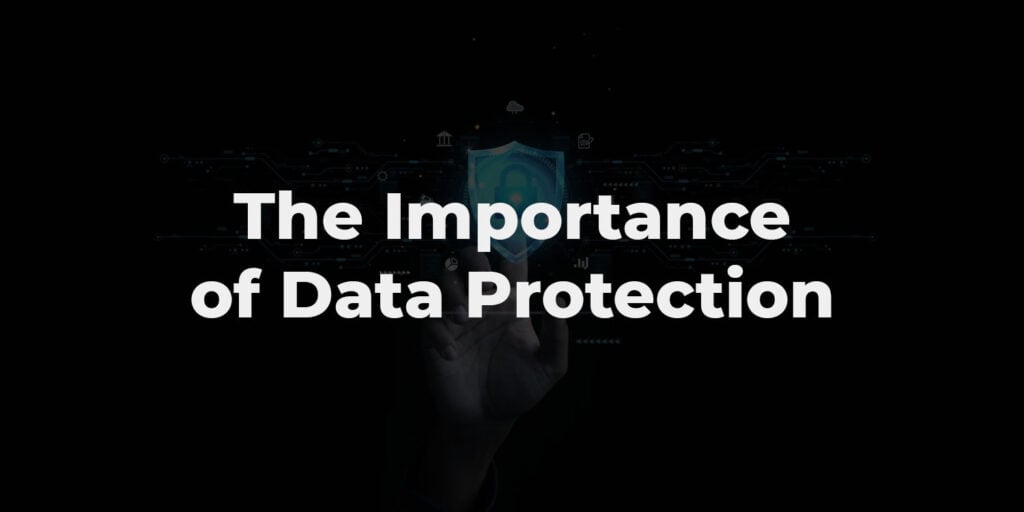Data Breach Prevention 101 Steering Clear of Common Pitfalls

Understanding Data Breach Prevention
We are living in 2024 now and as technology advances and businesses rely more on digital platforms, the need for data protection has become increasingly vital. Data breaches can have severe consequences, including financial losses and damage to a company’s reputation. Understanding data breach prevention is crucial in safeguarding sensitive information. Effective data protection involves implementing robust security measures, staying aware of potential vulnerabilities, and proactively addressing them. Let’s dive into it!
The Importance of Data Protection

Data protection is of paramount importance in modern life which is filled with highly advanced technologies around us. Whether it’s personal information or sensitive corporate data, safeguarding this information is essential. A breach in data security can result in identity theft, financial fraud, and even legal implications. Protecting data is not only crucial for businesses but also for individuals. With the increasing interconnectedness of our lives, ensuring the privacy and security of our personal information is a responsibility we should all take seriously.
Read more: Data breach statistics: Q3 2023
Common Pitfalls in Data Protection
Despite the growing awareness of data breaches, many organizations still fall victim to common pitfalls in data protection.
Some of the most common issues include:
- Lack of employee awareness and training on data protection best practices and potential risks
- Outdated or ineffective security measures that leave systems vulnerable
- Failure to properly secure third-party access through robust protocols and due diligence
- Poor password management and weak authentication practices
- Neglecting to regularly update and upgrade security protocols
Implementing strong data protection measures requires a multilayered approach, including educating staff, upgrading systems, vetting third parties, and authenticating access. Failing to address any one of these aspects can compromise an organization’s data security. Proactively identifying and mitigating vulnerabilities is essential to avoid becoming the next victim of a breach.
Best Practices for Secure Data Handling

To mitigate the risks of data breaches, organizations must adopt best practices for secure data handling. First and foremost, regular data backups are crucial. In the event of a breach or system failure, having up-to-date backups ensures that data can be quickly restored, minimizing potential losses. Implementing encryption technologies is another essential measure to protect data both at rest and in transit. Encryption makes it significantly more difficult for unauthorized individuals to access and decipher sensitive information.
Furthermore, adopting the principle of least privilege helps prevent data breaches. Giving employees access only to the data necessary for their roles minimizes the risk of unauthorized access. Data classification is also vital in ensuring that sensitive information is appropriately protected. By categorizing data based on its level of sensitivity, organizations can implement stricter security measures for highly confidential information.
Protecting Web Privacy and Digital Privacy
We are currently living in a world where protecting web privacy and digital privacy is crucial because of the rise of data breaches which have major consequences. Individuals must be aware of their online footprint and take steps to safeguard their personal information. Using secure and reputable websites, regularly updating software and applications, and being cautious about sharing personal data online are essential practices. Additionally, using secure internet connections, such as virtual private networks (VPNs), can add an extra layer of protection, especially when accessing sensitive information on public networks.
Organizations also have a responsibility to protect user privacy. Implementing robust privacy policies, obtaining explicit consent for data collection, and ensuring secure transmission of data are essential steps. Regular audits and vulnerability assessments help identify potential weaknesses in web and digital privacy practices, allowing organizations to promptly address them.
Ensuring Online Security
Online security encompasses various aspects, including protecting against malware, phishing attacks, and other forms of cyber threats. To ensure online security, organizations and individuals should regularly update their antivirus software and firewalls. Additionally, being cautious when opening email attachments or clicking on suspicious links is crucial to prevent falling victim to phishing attempts.
Regularly monitoring network traffic and system logs can help detect any unusual activity that may indicate a potential breach. Implementing intrusion detection and prevention systems adds an extra layer of security by actively monitoring and blocking suspicious network traffic.
Data Breach Prevention Tools and Technologies
There are numerous tools and technologies that can significantly enhance data protection. Intrusion prevention systems (IPS), for example, work alongside firewalls to monitor and block potential threats. Data loss prevention (DLP) software helps identify and prevent sensitive data from leaving the network. Encryption tools, such as secure socket layer (SSL) certificates and virtual private networks (VPNs), provide secure communication channels. Additionally, user and entity behavior analytics (UEBA) help identify abnormal user behavior that may indicate a potential breach.
Utilizing a combination of these tools and technologies, tailored to an organization’s specific needs, can significantly strengthen data breach prevention efforts.
Implementing a Data Breach Response Plan
Despite the best preventive measures, data breaches can still occur. Having a well-defined data breach response plan is crucial to minimize the impact and effectively handle the situation. The response plan should include steps such as promptly identifying the breach, containing the incident to prevent further damage, notifying affected parties, and conducting a thorough investigation to determine the cause of the breach.
Regularly testing and updating the response plan ensures its effectiveness and prepares the organization for a swift and efficient response in the event of a breach.
The Role of Data Privacy Regulations
Data privacy regulations play a critical role in data breach prevention. Regulations such as the General Data Protection Regulation (GDPR) in the European Union and the California Consumer Privacy Act (CCPA) set standards and requirements for organizations in handling personal data. Compliance with these regulations not only helps protect individuals’ privacy but also reduces the risk of data breaches and associated penalties.
Organizations must stay informed about relevant data privacy regulations and ensure their data protection practices align with the requirements.
Conclusion
Data breach prevention is an ongoing battle that requires constant vigilance and proactive measures. Understanding the importance of data protection, avoiding common pitfalls, and adopting best practices are crucial steps in safeguarding sensitive information. By prioritizing web privacy, digital privacy, and online security, individuals and organizations can minimize the risk of data breaches. Leveraging data breach prevention tools and technologies, implementing a response plan, and staying compliant with data privacy regulations further enhance data protection efforts. Together, these measures form a comprehensive strategy to steer clear of common pitfalls in data protection and protect valuable information from falling into the wrong hands.

Never forget a password again! The Relypass iOS app keeps your passwords and stores them securely, all for free. Get maximum convenience across all your Apple devices. Download Relypass now and take control of your online security!
Bookmark our blog for more security blogs and follow us on social media:












Offline Password Manager Security: Why It’s the Smarter Choice - RelyPas
January 12, 2024[…] Data breaches are common – Even big-name password managers have been hacked before. Just because something is encrypted doesn’t mean it’s invulnerable. […]
Offline Password Manager Security: Why It’s the Smarter Choice – RelyPass
January 12, 2024[…] Data breaches are common – Even big-name password managers have been hacked before. Just because something is encrypted doesn’t mean it’s invulnerable. […]